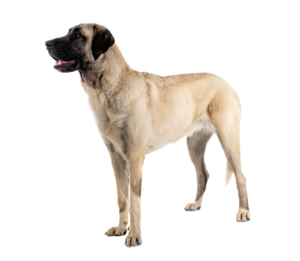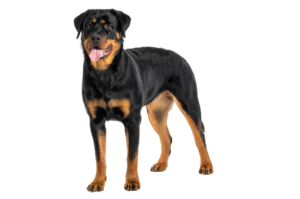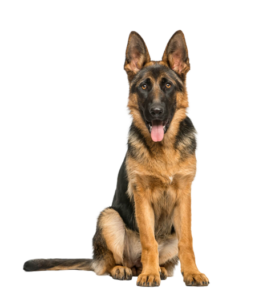All dog breeds can bite, and any dog breed has the potential to cause serious injury. However, medium to extra-large dog breeds with powerful bite force are more likely to cause serious, long-lasting injury or death. While many factors contribute to a dog’s likelihood to bite someone, such as its training, the dog’s history, the situation, and its owner’s behavior, a dog’s bite strength is a significant factor in the seriousness of a potential injury. If you have been injured in a dog bite incident, our experienced Indiana dog bite attorneys may be able to help. Incidents that result in serious injury can lead to substantial damages, including medical bills, wage loss, and pain and suffering. With our dedicated personal injury lawyers by your side, you can fight to seek compensation for your injuries. Contact us at Blackburn Romey today to schedule an initial case consultation and learn more about your options.
The strength of a dog breed’s bite is measured by pressure when a dog bites down. Pound per Square Inch, or PSI, is the measurement that demonstrates the amount of pressure. The greater the force with which a dog bites down on something, the higher the PSI number. For comparison, a full-grown lion bites down with a force of 691 PSI, and the average adult human has a bite strength of 140 PSI. There are a couple of dog breeds in the world that have a stronger bite than a lion and other wild counterparts. With so much power, it is clear how certain dog breeds can easily cause serious injury or death when they attack someone. While there are several exotic and uncommon dog breeds with formidable PSI ratings, the below ranking consists of dog breeds that are common in the United States with the strongest bites.









When it comes to protecting yourself and your loved ones from a dog attack, it is important to make the distinction that the size and strength of a dog do not necessarily increase its aggressiveness or its potential for a dog attack. Be mindful of all new dogs but especially those with large and powerful bites. By understanding this, you can gain insight into how it can lead to dangerous situations. While many dog bites are unavoidable, consider the following tips to help you and your loved ones recognize a dangerous situation and potentially avoid a dog attack.
The immediate moments following a dog attack often feel hectic and stressful. Despite this, it is essential to act quickly to protect yourself and those around you from further injury. Taking the following steps in the hours and days following a dog attack can help protect yourself and stay organized.
Dog bites can cause serious and long-term physical and psychological damage. The most common areas impacted during a dog bite incident are the hands, arms, lower legs, and face. This is because victims attempt to fight the dog off by pushing and kicking it, making their arms and legs targets. Many attacks also occur when the victim is bending down with their face near the dog. Dogs can also instinctively aim for vulnerable areas such as the face and neck. As a result, victims of dog bites can be left with serious lacerations and other injuries from these areas that require swift medical attention. Dog bite incidents commonly result in the following injuries:
Regardless of the severity of the injury, it is crucial to seek professional medical treatment following a dog bite. There are several reasons for this, including potential infection, the presence of non-visible injuries, and documentation.
When you arrive at a medical care facility following a dog bite, staff will begin by evaluating the location and severity of your injuries to confirm that you are in stable condition. Then, initial treatment includes cleaning and flushing the wound to remove debris and reduce the risk of infection. Depending on the type of injury, initial treatment may include X-rays, stitches, or even emergency surgery. In most cases, you will receive instructions for follow-up medical care.
Dog bite incidents commonly result in tissue damage of some type. These wounds are typically bandaged and treated with antibiotics and topical medications that promote healing. For large or severe wounds, your physician could recommend professional wound care treatment as follow-up care. There, wound care specialists will clean your wounds, change bandages, and check on the healing process. This is essential medical care as dog bite wounds are at risk for infection. In addition to wound care treatment, follow-up care could include attending recurring physical therapy, wearing a cast or a brace, removal of stitches, and reconstructive surgeries.
Permanency refers to any medical condition, physical disfigurement, or physiological trauma from the dog bite incident that is permanent in nature. This includes scarring, loss of tissue or body part, decreased range of motion, and more. A physician can determine your level of permanency, if any, and outline the future medical care over your expected lifetime. Permanency is a significant factor in a personal injury case. Medical records, physical assessments, and photos serve as evidence to depict the validity and severity of injuries and permanency.
Determining who is liable and proving liability in dog bite cases can be a highly contentious and difficult legal issue. In Indiana, a dog owner or keeper may be held liable for injuries caused by their pet if the owner or keeper of the dog knew, or should have known, that the dog had dangerous or vicious propensities. Those propensities may be proven by evidence that the dog had previously attacked or behaved aggressively, or by showing that the dog belongs to a breed that can be dangerous. Additionally, a dog owner may be liable even without knowledge of a dog’s dangerous propensities if the dog bites a mail carrier or public servant. There are multiple potential defendants in dog bite incidents, some of which include the dog’s owner, landlords, or property measurement companies. Complex liability issues are common in dog bite personal injury cases and require experienced and knowledgeable attorneys to navigate.
The process of obtaining compensation has several legal hurdles related to liability and applying Indiana dog bite statutes. This is why it is almost always in your best interest to contact an experienced Indiana dog bite attorneys like Blackburn Romey for legal advice and support while pursuing compensation. Here are a few benefits of hiring a dog bite attorney:
The settlement value for a dog bite lawsuit varies depending on the unique circumstances of each case. Here are some factors that help determine the settlement value of a lawsuit:
While many injured victims obtain compensation from the at-fault party’s insurer, working with experienced dog bite attorneys like Blackburn Romey can enhance your chances of getting a fair settlement covering your injury-related losses.
Dog bite incidents can be frightening and overwhelming, especially in severe cases involving a dog breed with a powerful bite. At Blackburn Romey, we help our clients seek compensation for the physical and emotional damages incurred. Our experienced Indiana dog bite attorneys take the time to understand your case and work diligently to fight for your rights. Through open communication every step of the way, our personal injury lawyers provide support and guidance during this difficult time. If you or a loved one has been injured in a dog bite incident, contact us today at Blackburn Romey to schedule an initial case consultation with our Indiana personal injury firm.
Blackburn Romey founding partner Tom Blackburn graduated with honors receiving a degree from Indiana University at the Robert H. McKinney School of Law. Initiating his legal career in 1977, he has been active in practicing law and currently serves as a member of the Indiana State Bar Association on the Ethics and Advertising Committees, the American Bar Association, the American Association for Justice, as a board member at the Indiana Trial Lawyers Association, and as an appointed member of the Executive Committee for the State of Indiana for the National Trial Lawyers Association.